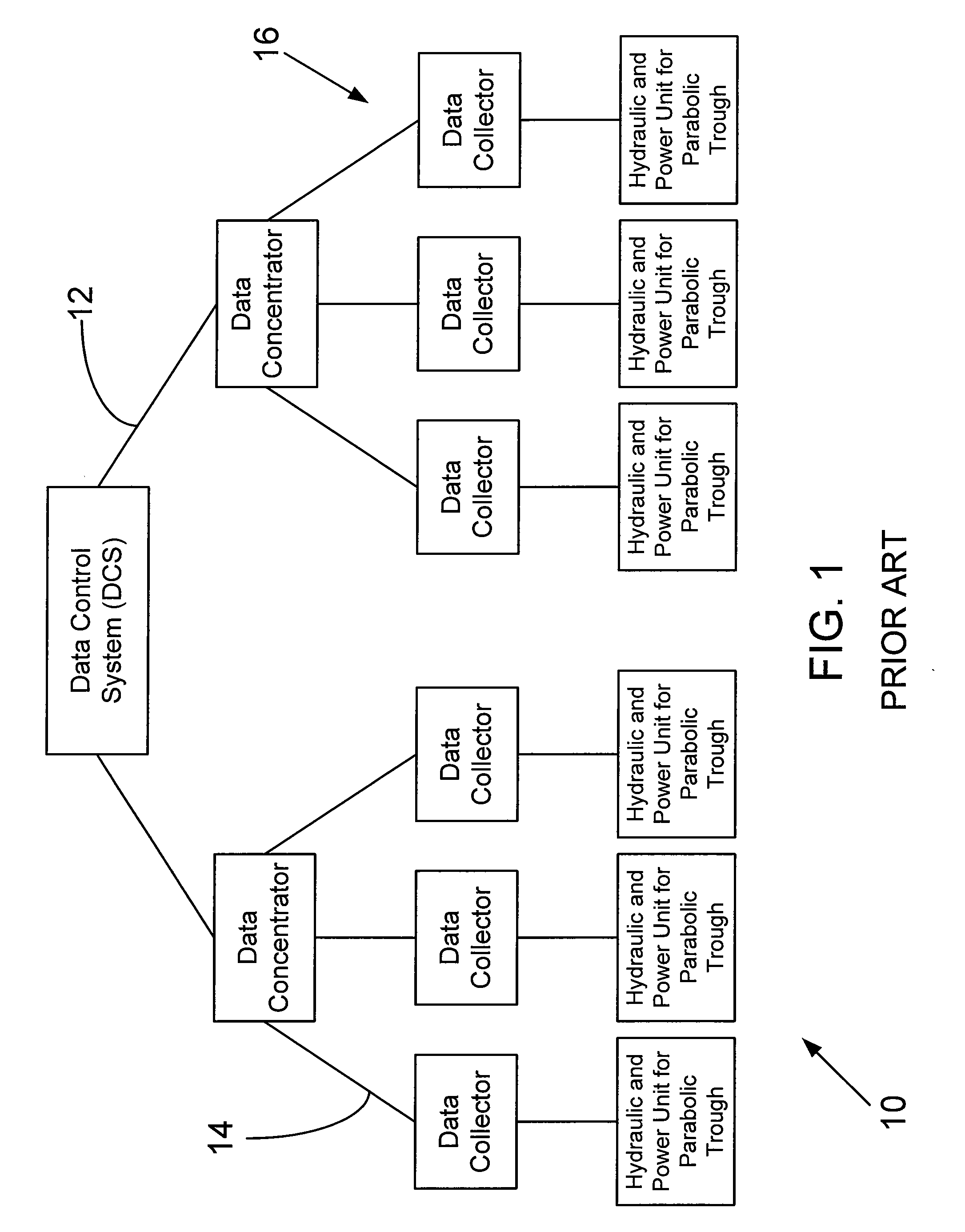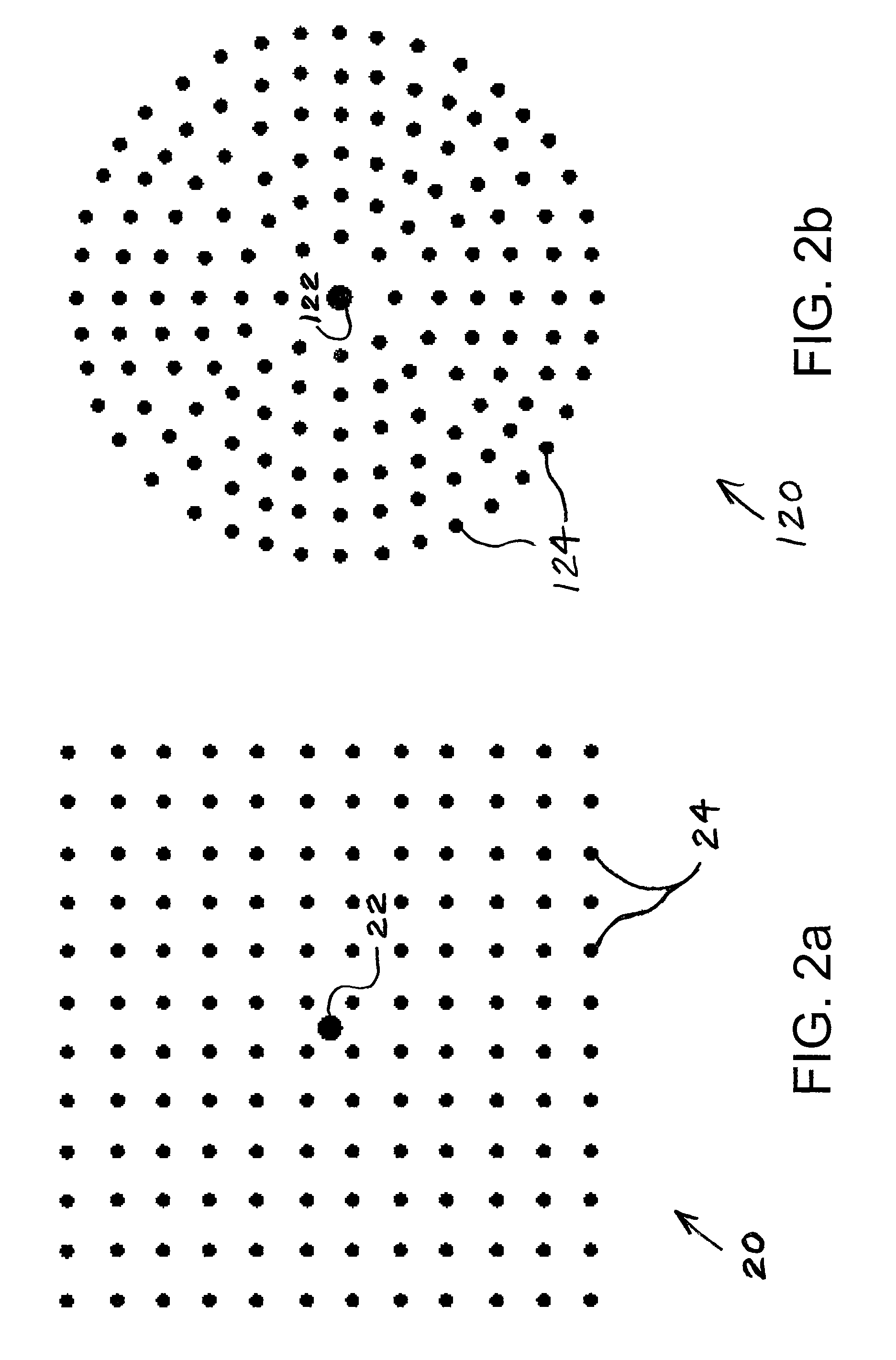Method for robust wireless monitoring and tracking of solar trackers in commercial solar power plants
a solar power plant and tracker technology, applied in the field of wireless monitoring, can solve the problems of cumbersome process, huge cost and installation effort, and require several kilometers of wires, and achieve the effect of robust wireless communication and cost and time-saving
- Summary
- Abstract
- Description
- Claims
- Application Information
AI Technical Summary
Benefits of technology
Problems solved by technology
Method used
Image
Examples
second embodiment
[0136]In accordance with the invention, one embodiment of a solar tracker wireless monitoring and tracking arrangement 20 is shown in FIG. 2a. Arrangement 20 includes a central data control system (DCS) 22 which is located within a matrix of rows and columns of trackers 24. In a solar tracker wireless monitoring and tracking arrangement 120 illustrated in FIG. 2b, trackers 124 are arranged in concentric rings surrounding a central data control system (DCS) 122. Thus, the solar plant may have trackers arranged either in a rectangular grid or in concentric circles as shown in FIGS. 2a-b. Two types of communication that may be involved in the invention include data collection and data communication (e.g., data transmission). In data collection, status messages from each tracker may be sent to, and collected by, the DCS. In data communication, query / control messages may be transmitted from the DCS to the trackers. This query / control message can be unique for each tracker or can be a bro...
third embodiment
[0228]a solar tracker wireless monitoring and tracking arrangement 1720c illustrated in FIG. 17c is substantially similar to arrangement 1720a, except that arrangement 1720c includes eight repeaters or intermediate data collectors 1792c disposed in a crisscross pattern. In the particular illustrated embodiment, four repeaters 1792c are horizontally aligned with DCS 1722c, with these five elements being substantially equally spaced apart. Four other repeaters 1792c are vertically aligned with DCS 1722c, with these five elements also being substantially equally spaced apart.
fourth embodiment
[0229]a solar tracker wireless monitoring and tracking arrangement 1720d illustrated in FIG. 17d is substantially similar to arrangement 1720b, except that arrangement 1720d includes eight repeaters or intermediate data collectors 1792d disposed in a crisscross pattern. In the particular illustrated embodiment, four repeaters 1792d are substantially horizontally aligned with DCS 1722d, with these five elements being substantially equally spaced apart. Four other repeaters 1792d are substantially vertically aligned with DCS 1722c, with these five elements also being substantially equally spaced apart.
PUM
 Login to View More
Login to View More Abstract
Description
Claims
Application Information
 Login to View More
Login to View More - R&D
- Intellectual Property
- Life Sciences
- Materials
- Tech Scout
- Unparalleled Data Quality
- Higher Quality Content
- 60% Fewer Hallucinations
Browse by: Latest US Patents, China's latest patents, Technical Efficacy Thesaurus, Application Domain, Technology Topic, Popular Technical Reports.
© 2025 PatSnap. All rights reserved.Legal|Privacy policy|Modern Slavery Act Transparency Statement|Sitemap|About US| Contact US: help@patsnap.com



